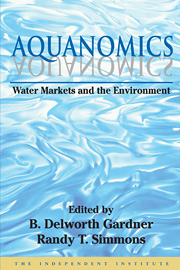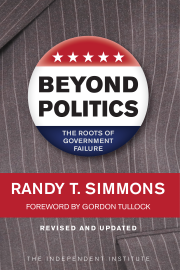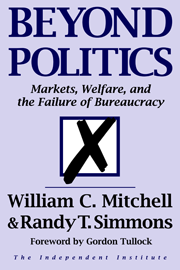At the Western Governors Association’s two-day Executive Summit on the Endangered Species Act, I told the governors that the Endangered Species Act is broken—that it was born broken.
The ESA is based on a flawed understanding of the Americas at Columbian contact and on the myth of the balance of nature. In addition, it is not even an endangered species act; it is an endangered subpopulation and distinct population segment act.
It uses a regulatory approach born in the Nixon administration, and it ignores the role of states and landowners. It ignores incentives. A new endangered species act should correct these misunderstandings.
The extensive federal program to bring wolves to the West is one example of the misunderstandings that ought to be fixed.
“Restoring” wolves will not return ecological processes to a mythical or mystical or even pre-Columbian balance of nature.
There is no balance of nature, there is no ecological stasis, there is only change.
What is more, wolves were not the top predator structuring western ecosystems. Humans were the top predators and they out competed wolves for their prey.
Thus, at Columbian contact, there were few wolves in the West because there was not a prey base. Wolves only flourished after European diseases decimated Native American populations.
Today, wolves as a species are not threatened with extinction. There are thousands of gray wolves in Canada and Alaska.
Yet, of the list of 1,264 endangered or threatened U.S. species, the gray wolf ranks 24th in terms of expenditures.
We spend millions of dollars to protect a non-threatened species and justify it by arbitrarily creating “distinct population segments.”
What that means is that if a gray wolf wanders south to where Interstate 70 bisects Utah and manages to cross the road, he immediately changes legal status. He has moved into the Southwest distinct population segment and must receive extra protection. Biologically he is the same animal. Legally he is not.
Finally, the ESA is broken because it ignores one other important reality: 80 percent of all listed or threatened species have all or part of their habitat on private land.
Under the current law, landowners are punished for cultivating, encouraging or allowing habitat that attracts or protects an endangered species. The ESA prohibits harm to an endangered species and the Fish and Wildlife Service interprets harm to include modifying habitat.
Thus, “A forest landowner harvesting timber, a farmer plowing new ground, or a developer clearing land for a shopping center (stands) in the same position as a poacher taking aim at a whooping crane,” according to Michael Bean of Environmental Defense.
Rational, normally law-abiding citizens, therefore, often engage in preemptive habitat destruction. If they expect an endangered species may come to their land, they destroy the habitat.
But the governors were not looking for a litany of problems; they were looking for better ways to protect and save species. I suggested they remember that Richard Nixon was the president who asked for and got from Congress the Endangered Species Act, and that it is time we moved beyond the Richard Nixon approach to the environment.
I suggested the following:
First, forget the 1970s mythology and romanticism of the “balance of nature” and concentrate on real problems. This can be best accomplished by adopting environmental federalism as a clear policy goal.
Under environmental federalism, the national government is responsible for national problems. Global extinctions are what really matters for a species. It makes little sense to spend scarce money to protect a marginal distinct subpopulation of a species already thriving elsewhere, if it means you cannot protect another actual species from extinction.
Thus, the act should be amended to be an endangered species, not subspecies, or distinct subpopulation segment act. Then, states can decide whether or how to protect subspecies. They can create interstate compacts for subspecies whose range crosses state lines.
Some will object to environmental federalism, claiming states will engage in a race to the bottom in an attempt to promote development. In fact, the opposite tends to be true.
State forests are better managed, both environmentally and economically, than federal forests. Some states have stricter laws than those imposed by the federal government. States have time and place-specific information that allows them to react more quickly and more creatively than federal agencies.
Second, I proposed that federal regulators’ regulatory hammer be taken away and be replaced with funding to encourage preservation.
A simple administrative change could replace the definition of “harm” used by the Fish and Wildlife Service. Because “harm” currently includes habitat modification, our well-trained and smart federal agents have little incentive to think creatively about ways to really save endangered species.
If they lose their regulatory hammer, they will have to consider and invent new tools to protect species.
They might create a range of innovative programs similar to the U.S. Department of Agriculture’s Conservation Reserve Program, for example. They could devise production contracts for property owners who increase habitat and species numbers, and rewards for having species reproduce on your land.
Money for such a program could come from a user charge on public lands or from earmarking funds from oil and gas production on public lands.
But we may already appropriate enough money to cover the costs of innovation. We will not know until we actually think beyond direct regulation.
Under these proposals, the national and state governments would become partners with property owners instead of being adversaries. Money will be directed to saving actual species. States will have authority and responsibility for managing our biological heritage.
These proposals actually are based on Aldo Leopold’s admonition to experiment with many systems instead of “one-track laws.”
And by engaging property owners in the effort to protect species, we will also follow Leopold’s claim that “Conservation will ultimately boil down to rewarding the private landowner who conserves the public interest.”












